#Leaf skeletonizer moth
Explore tagged Tumblr posts
Text



[PHOTOS TAKEN: MAY 11TH, 2024 | Image IDs: Three photos of an orange and black, orange-patched smoky moth on a rusted and dirty metal surface /End IDs.]
#zygaenidae#zygaenid moths#Leaf skeletonizer moth#Moths#Moth#Lepidoptera#entomology#insects#insect#bugs#bug#bugblr#arthropods#invertebrates#inverts#photos#photo#Wasp House Sights
12 notes
·
View notes
Text
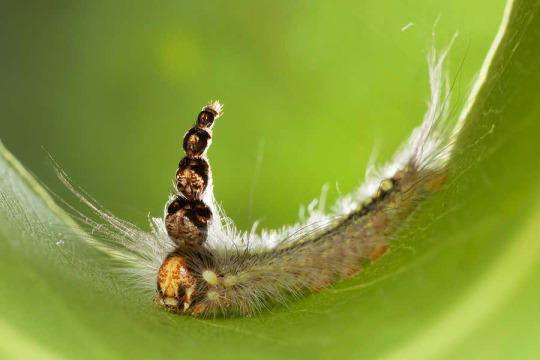
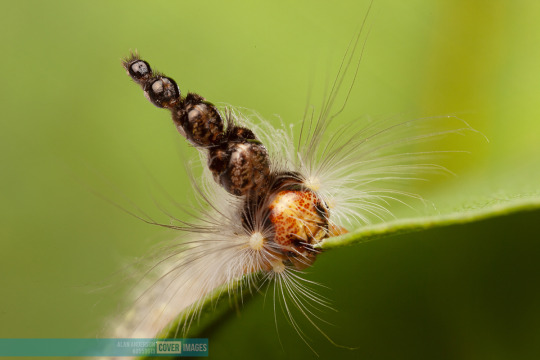
meet the gum-leaf skeletonizer (Uraba lugens), which is a caterpillar that stacks its old moulted heads on top of its current head! it's also known as the mad hatterpillar. they use their heads as a defence mechanism, and they can stack up to six or seven heads!
newscientist | newsweek | bbc science focus
photos: alan henderson (minibeast wildlife au) | alan henderson
#terrestrial#earthposting#facts!#bugblr#entomology#science#nature#biology#zoology#moth#new zealand#australia#invertebrates#arthropods#insects#caterpillars#moths#gum leaf skeletonizer#earth fact no. 18
13 notes
·
View notes
Text
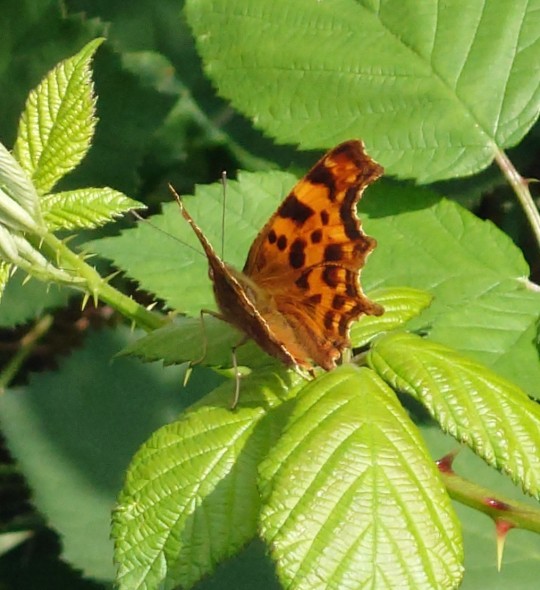

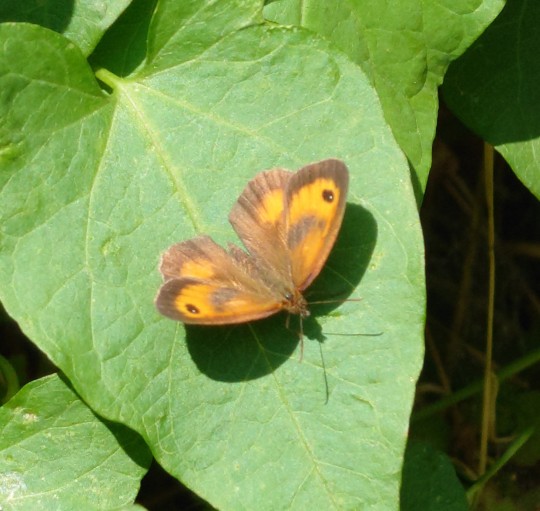

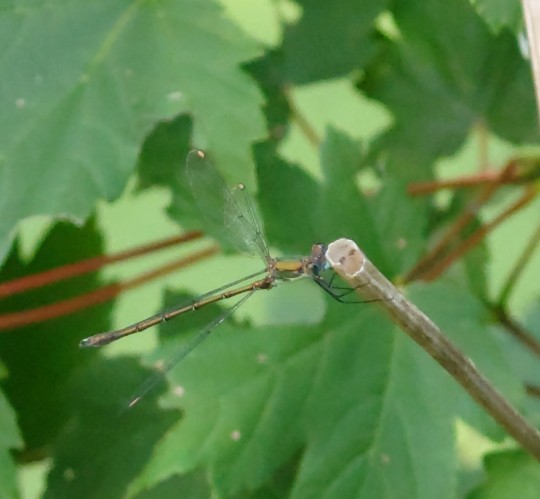

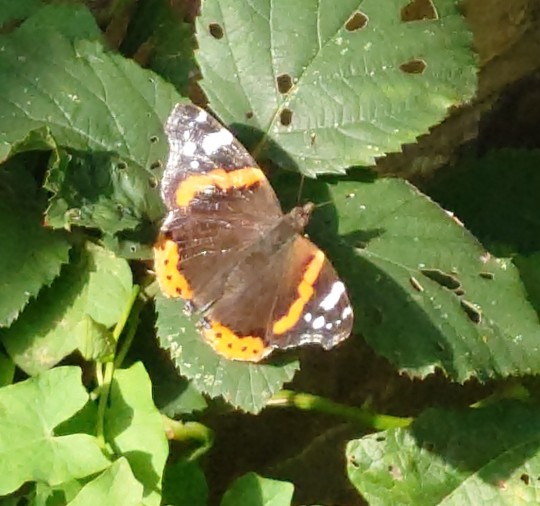

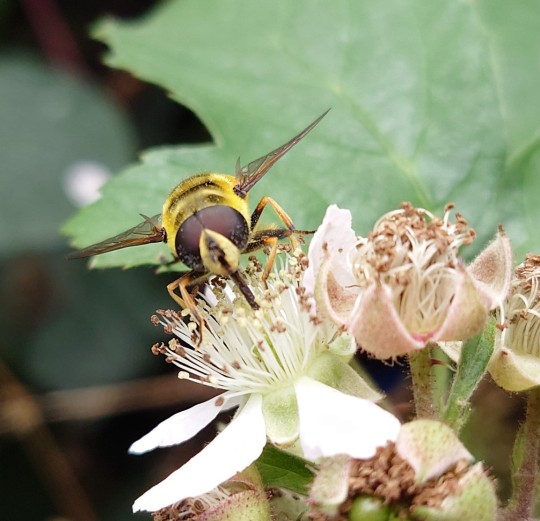

Some flyers from my garden! How many do you recognise?
- - -
[All photos taken by me, DeeperMadness, on a Sony Xperia 1 IV]
#Butterfly#Moth#Dragonfly#Damselfly#Hoverfly#Mimic#Photography#Flower#Garden#My photos#Comma butterfly#Jersey tiger moth#Apple leaf skeletonizer#Holly blue#Gatekeeper#Red admiral#Banded demoiselle#Demoiselle#Southern emerald damselfly#Southern emerald
13 notes
·
View notes
Text
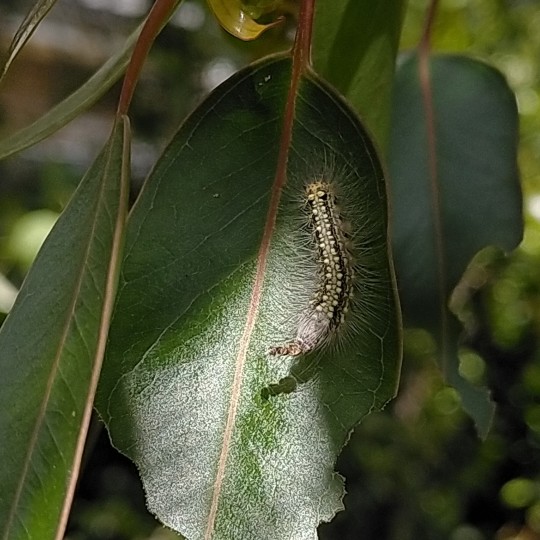
Uraba lugens
05-NOV-2022
Melbourne, Vic
#australia#victoria#melbourne#australian natives#native fauna#caterpillar#spitfire#gum leaf skeletonizer#arthropod#insect#bug#moth#arthropoda#insecta#lepidoptera#nolidae#uraba#uraba lugens
0 notes
Text
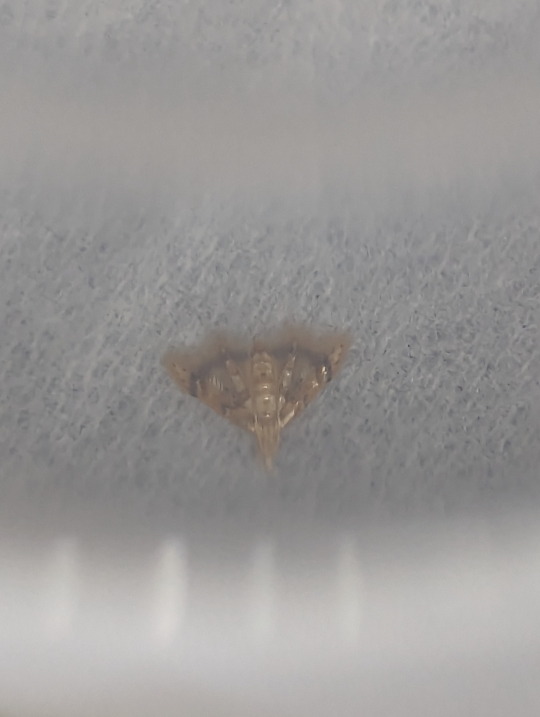

16/11/23 Photos 1-2 - Raise 1, adult specimen
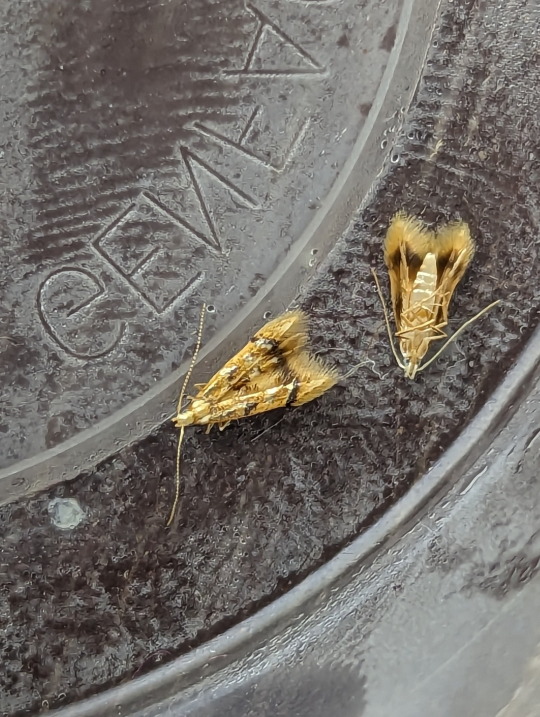

21/11/23 Photos 3-4 - Raise 2, adult specimens frozen for future study
The raising of Epimarptid moths, seemingly the first iNaturalist observations in Australia.
Recently I've become interested in Gelechioidea, whose caterpillars are typically small, unknown, and in desperate need of rearing. Larval behavior varies greatly in this superfamily, with case-bearers in the Hemibela genus to Pyroderces terminella which has been reported feeding on spider eggs (Common & Slater 1990).
However, sometimes a caterpillar can be found feeding on a simple garden weed, as is the case here. These Epimarptid moths (species unidentified) were discovered on the annoying garden weed, Commelina diffusa, in which the caterpillars fed beneath strange silky shelters until the vine's leaves are completely skeletonized.
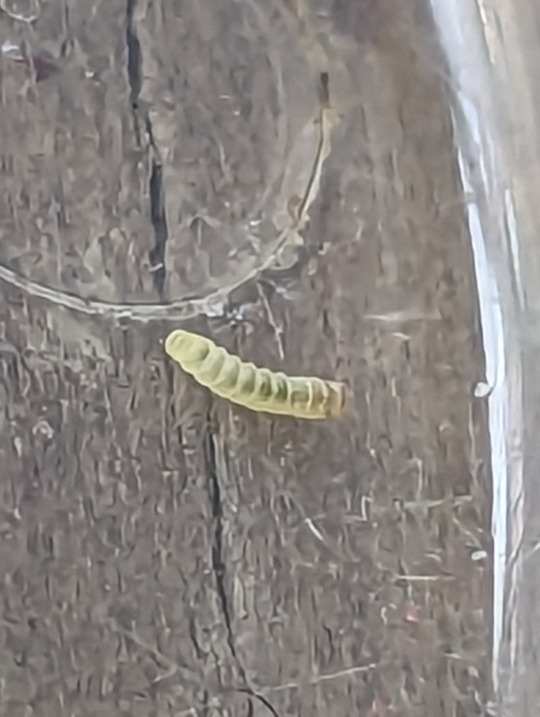

09/11/23 Photos 5-6 - Caterpillar outside of silk shelter

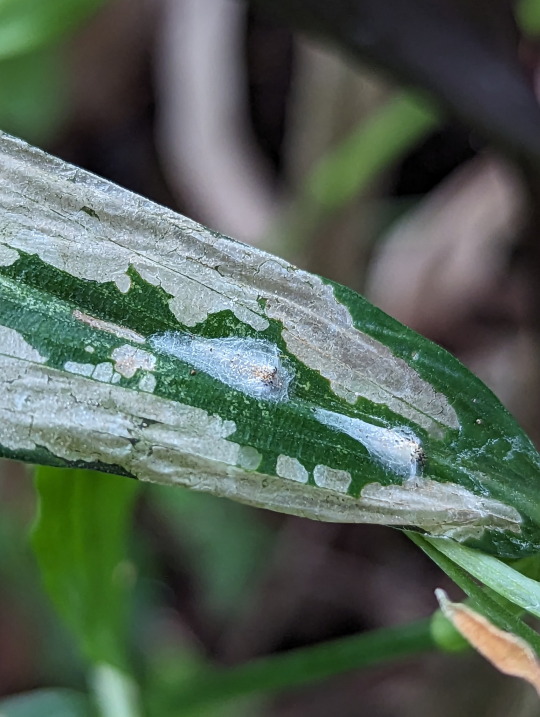
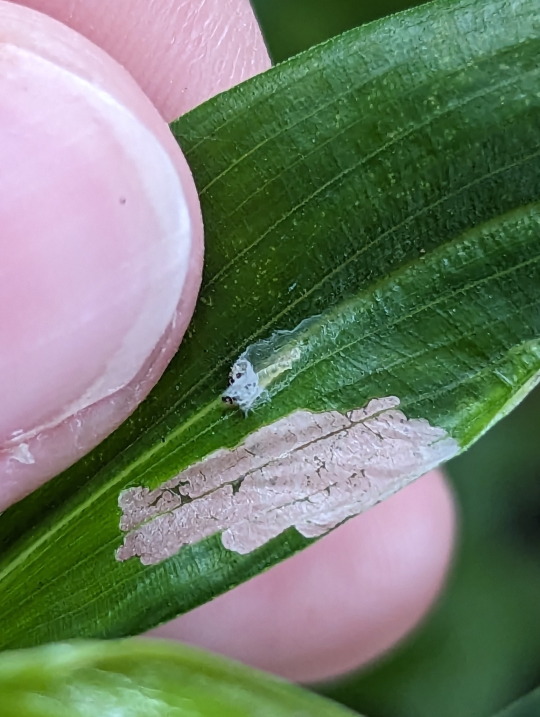
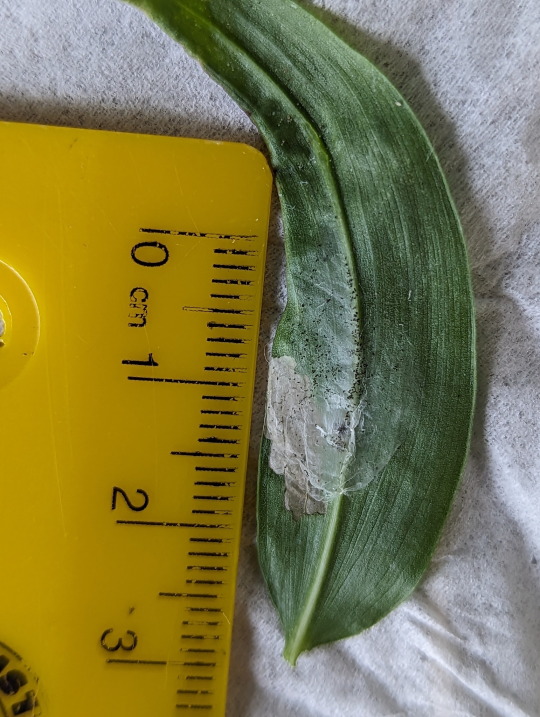
08/11/23 Photos 7-10 - Silk shelters created by caterpillars
As you can see, the caterpillars are very small (~2mm), along with their silk shelters (~2mm-1cm). The strange tear-drop shaped silk shelters were always positioned in the centre of the leaf, with the shelter growing into a large shapeless mass as the caterpillar develops. Leaf damage was typically seen around the shelter, rather than beneath it, so perhaps the caterpillars stuck their heads out of the shelter to feed.

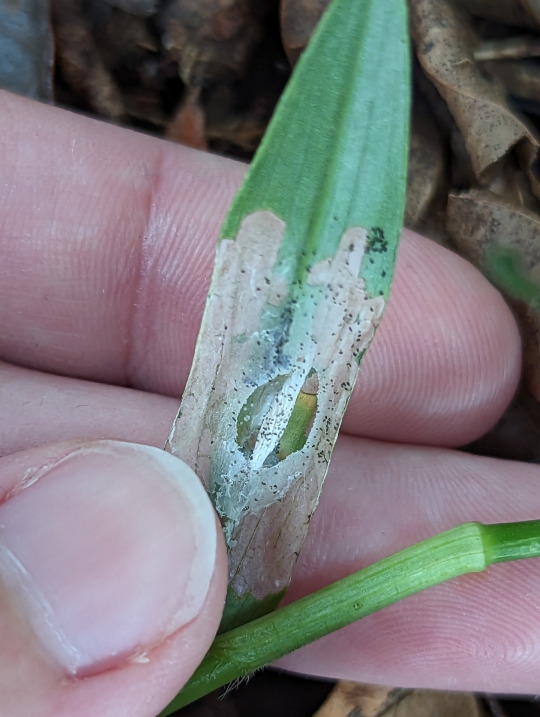
08/11/23 Photos 11-12 - Cocoons made by caterpillars
Though I attempted to raise the species from its larval stage, in captivity the caterpillars left their silk shelters and refused to feed on the leaves (as seen in photos 5-6). I instead resorted to finding a pupa and bringing it into captivity instead.
The cocoons are tube-shaped structures with surrounding silk and leaf eaten away. The cocoons were positioned on the opposite side of the leaf to the original silk shelter. It took about 8 days for the cocoon in photos 11-12 to hatch.
After the first successful hatching (photos 1-2), I took more cocoons into captivity, and froze the moths which hatched out for future taxonomic study (photos 3-4).
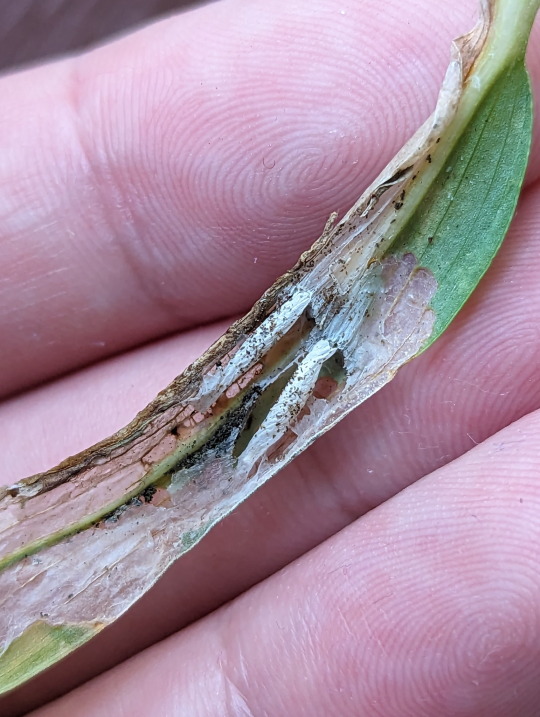
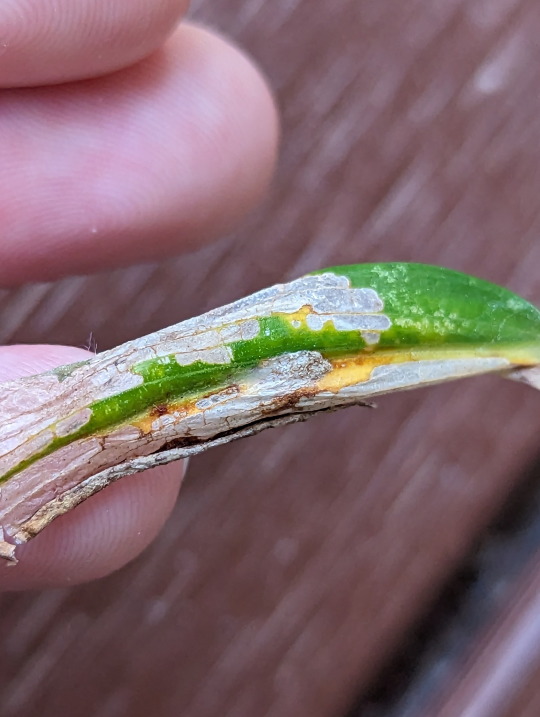
16/11/23 Photos 13-14 - Cocoons collected for collecting and freezing of moths
It is indeed possible for two caterpillars to feed on the same leaf, forming separate silk shelters as seen in photos 7-8. Likewise, the cocoons collected for specimen freezing were found side by side.
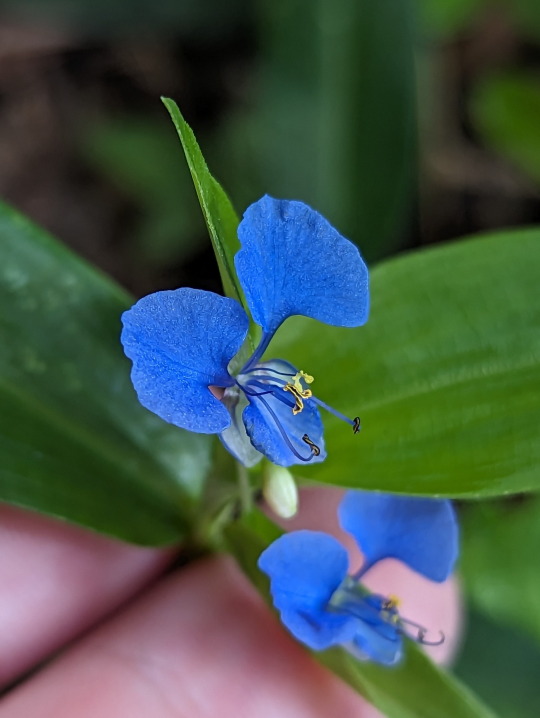

03/11/23 Photos 15-16 - Commelina diffusa, hostplant of raise 1 specimens

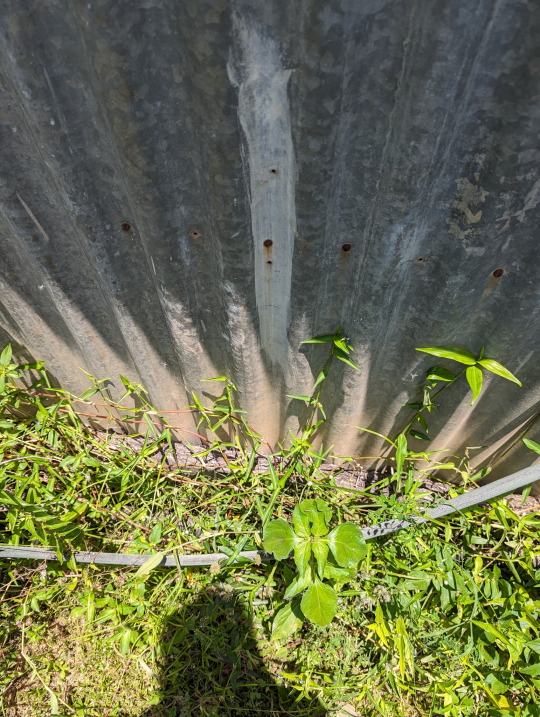
30/10/23 Photos 17-18 - Commelina sp., hostplant of raise 2 specimens
The Commelina vines in which the caterpillars fed have been reaping havoc in our garden, climbing over other plants and forming dense vine thickets. With the large amount of this vine, there is an equally large amount of these caterpillars, so if the frozen specimens become damaged in some way (unlikely), I can at least collect more.
Will continue to rear caterpillars in the future.
*To be clear, I do not like killing specimens, and only do so when they are of importance or needed for study.
----------------------------------------------------------
References
Common, IFB, Slater, Ederic 1990, Moths of Australia, Melbourne University Press, Carlton.
Further reading on Epimarptidae if interested:
Kim, S Lee, S 2016, 'First record of family Epimarptidae Meyrick (Lepidoptera: Gelechioidea) from Korea, with newly recorded species', Journal of Asia-Pacific Biodiversity, vol. 9, no. 4.
08-21/11/23 - Epimarptidae sp., hostplant: Commelina spp.
QLD:WET
#invertblr#invertebrates#Arthropods#Arthropoda#insects#insecta#insectblr#insects tw#insect#bugs#bugblr#bugs tw#bug#entomology#Epimarptidae#caterpillar rearing#rearing#insect rearing#unidentified#Gelechioidea#Curved-horn Moths#caterpillars#caterpillar#larvae#larval stage#larval structures#Commelina#moths#mothblr#mothcore
15 notes
·
View notes
Text
THE COMPETITORS
After hours of filtering, I have a list! From 411 submisstions to 134 competitors. Of course, that means that not all the submissions are competing. My main rule for filtering was that when many similar animals were submitted, one was selected. This means that even if your submission din't get in, there is likely somthing else similar you can vote for instead! I'm hoping to get the polls out this Saturday or Sunday, and I'll post the time once it's decided. That being said... here's the list!
Mouse deer
Blanket octopus
Twenty plume moth
Anomalocaris
Caecilian
Bagworm moth caterpillars
Balaenognathus
Banded archerfish
Barnacle
Barreleye fish
Tripod fish
Bigfin squid
Bilby
Black sea hare
Black snub nosed monkey
Blobfish
Blue sea dragon
Nano-chameleon
Bush brown caterpillar
Chinese water deer
Maned wolf
Colugo
Common spotted cuscus
Corpse Assassin Bug
Messmate pipefish
Cotylorhynchus
creatonotos gangis
Tongue eating louse
Ganges river dolphin
ghost pipefish
Giant Anteater
Giant gippsland earthworm
Giant tube worm
Giraffe Weevil
Glowworms
Goblin shark
Golden mole
Green-banded broodsac
Greenland shark
Gum leaf skeletonizer caterpillars
Hagfish
Hallucigenia
Hammer head bat
Helicoprion
Honduran white bat
Short horned lizard
Green hydra
Jerboa
Jerusalem cricket
Lamprey
Largetooth sawfish
Bulwer’s pheasant
Lowland Streaked Tenrec
Lyrebird
Marbled polecat
Mata mata
Mexican mole lizard
Ghost faced bat
Mudskipper
Muntjac
Naked bulldog bat
Naked mole rat
Phillipene tube nosed fruit bat
Oarfish
Mantis shrimp
Ogre faced spider
Okapi
platypus
Pangolin
Parrot fish
Partridge bug
Pelican eel
Asian giant softshell turtle
Pink fairy armadillo
Pipa pipa
Platybelodon
Portuguese Man O War
Potoos
Predatory tunicate
Pufferfish
Sea spider
Red lipped batfish
Bowmouth guitarfish
Roseate spoonbill
Pink iguana
Royal albatross
Sage grouse
Saiga antelope
Sailfin dragon
Volcano snail
Schaefer’s anglerfish
Sea cucumber
Sea pig
Sea sheep
Sharovipteryx
Echidna
Assassin spider
Spider tailed viper
Siphonophore
Solenodon
Spectral bat
Spix’s disc winged bat
Spotted wobbegong
Stalk-eyed fly
Stoplight loosejaw
Giant phantom jelly
Sunfish
Sword billed hummingbird
Tailless whip scorpion
Tapir
Tardigrade
Tarsier
Telescopefish
Woodcock
Aye-aye
Bobbit worm
Nautilus
Glass frog
Immortal jellyfish
Olm
Mirror spider
Trilobite Beetle
Trumpetfish
Vampire bat
Vampire squid
Velvetworm
Wonderfish
Wrinkle-faced bat
97 notes
·
View notes
Text
love when you see a bug on a grape leaf and you're like "wow what is that" and look it up and it's a "grapeleaf skeletonizer moth". like hell yeah he sure does belong on that grape leaf. also sick name
4 notes
·
View notes
Text
Three Poems on Loss
1) Dear Minnie, Dear Ms. By Aracelis Girmay
This earth of the dagger-toothed & hawks, whose names we know, taking bones for diamonds, full of hair & snakes, earth eating you, slowly, below the sound of gold horns.
This earth with a jaw in its hand. Brown-chariot, take-you-home earth, chew you up with the quiet work of animals & trees, underworld churning you through the dark engines of its appetite. This earth we opened up & buried you in, our treasure, we miss you, we miss you with all life. This night we think we will never close again. We are pinned open like a scientist’s moths to leave you there dressed in a box & earth around you. This box earth, coffin earth. Teeth earth eat your chest through, laced by the wrangle of beetles & worms & ants who carry your bright pieces like market cloth over their heads to feed you to the queen in the deeper corridors of mysteries & dirt.
Trust the queen is you.
Trust the mud is you, & the soft, silver afro of the dandelion.
Trust the grass-whistle might be your speech, high as the whistle of the whale. Trust we��ll know your shape, whatever species in you answers when we put our faces to the dirt & call you by your old & human name.
2) Miss you. Would like to take a walk with you. By Gabrielle Calvocoressi
Do not care if you just arrive in your skeleton. Would love to take a walk with you. Miss you. Would love to make you shrimp saganaki. Like you used to make me when you were alive. Love to feed you. Sit over steaming bowls of pilaf. Little roasted tomatoes covered in pepper and nutmeg. Miss you. Would love to walk to the post office with you. Bring the ghost dog. We’ll walk past the waterfall and you can tell me about the after. Wish you. Wish you would come back for a while. Don’t even need to bring your skin sack. I’ll know you. I know you will know me even though. I’m bigger now. Grayer. I’ll show you my garden. I’d like to hop in the leaf pile you raked but if you want to jump in? I’ll rake it for you. Miss you standing looking out at the river with your rake in your hand. Miss you in your puffy blue jacket. They’re hip now. I can bring you a new one if you’ll only come by. Know I told you it was okay to go. Know I told you it was okay to leave me. Why’d you believe me? You always believed me. Wish you would come back so we could talk about truth. Miss you. Wish you would walk through my door. Stare out from the mirror. Come through the pipes.
3) Separation By W.S.Merwin
Your absence has gone through me Like thread through a needle. Everything I do is stitched with its color.
0 notes
Text
-portal-
finger to my kneecap
i start tracing
wrist
collarbone
forearm
cheek
jaw
throat
knocking at the door
hoping she’ll hear
coax out the gal who sits buried somewhere deep in her meaty tower, who mourns and craves yet hides and wails
invite her out
to sit
and look
at skeleton of leaf
flutter of moth
snaking of root
hear dying leaves tapping against one another, it’s almost funny, those gentle golf claps
passing hikers babble just feet from us on the trail but we’d sit unseen
secret and safe
in a square foot of our own personal forest
Come, Self.
i miss thee.
we make good company you and i.
I’m sorry I forget.
But I’m here now.
Knock knock.
0 notes
Text




[PHOTOS TAKEN: MAY 9TH, 2024 | Image IDs: Four photos of two orange and black, orange-patched smoky moths mating on top of a stick, the wings of the male covering the majority of the female /End IDs.]
#zygaenidae#zygaenid moths#Leaf skeletonizer moth#Moths#Moth#Lepidoptera#entomology#insects#insect#bugs#bug#bugblr#arthropods#invertebrates#inverts#photos#photo#Wasp House Sights
16 notes
·
View notes
Text
Reworked Concepts
I reworked my overarching concept to cover butterflies, moths, beetles, and dragonflies (basically flying insects).
Blue hat - Paper cutout Animation
Title sequence - colourful cutout animation with layers of circles on top of one another, creating a tunnel of sorts. each of the circles will be moving in alternative directions and feature imagery of the bugs I will be focusing on. I want the movement to create a zoetrope-like effect. The animation will start with a zoom in into the 'tunnel' and then in the center the title will appear.
title - "Flying Insects"(?)

Red hat - 2D (Digital/Traditional)
Mortality and the human soul
2d (watercolour?) animation which features the metamorphosis of a person turning into a moth. I want to focus on the cycle of life and death and how people have related their own cycle of life to the metamorphosis of moths and butterflies.
In addition, the use of the moth specifically is important as they are often symbolic of death and are some of the insects that decompose carrion.
If I am doing watercolour, I want to try doing it in a similar way to charcoal animation - one painting constantly changing.

Metamorphosis and the human soul
Person opening their brain to reveal a moth/butterfly.
Person opening their upper torso to reveal a moth/butterfly living inside. We see the person begin to break down into just a skeleton, and as they do, the young butterfly/moth grows from a caterpillar into a fully fledged adult and flies away.
Metamorphosis and the human soul
2D animation - human in an egg, hatching, and then growing up while it sits on a leaf. We see the season change behind them. Cut to them old and sleepily getting into a cocoon. Match cut to a new season and then we see a butterfly emerge.
Metamorphosis and the human soul
A digital 2D recreation of the Truman Show staircase scene but with a large flying butterfly in the background of the character, almost appearing painted onto the wall. When the character leaves through the door, so does the image of the butterfly.
This is meant to represent the death of the character, and how in death they are ascending into a new reality (perhaps a better one even?). The butterfly represents their soul, now a fully fledged adult ready to take on the afterlife.

White Hat - After Effects 2D animation
Showcase the large number of flying insects. Will start with a close up of a few bugs. pan out to show several bugs all moving around. when panned out, the bugs are represented through circles. A panel appears showing 2 million - the number of different species of flying insects.

Yellow hat - Stop Motion
Insects as decomposers
Features a large dung beetle god. He is seen taking a clump of clay and shaping it into our planet. This is meant to represent how beetles are primary decomposers of the ecosystem, and as a result, they are what keep the planet alive and running. They are invaluable in transferring energy and providing new life for the planet to continuously grow and regrow.
The planet could start turning to mush every time it stops shaping it, and as a result the beetle god must keep shaping and reshaping the world anew. This signifies how insects break down dead matter and repurposes it into something new or as nutrients for living creatures.
Insects bring meaning to death; repurposes it back to grow new life. Its a transfer of energy (quite literally). Nothing truly dies, but is instead made anew. As a result, I thought it fitting to liken the dung beetle to a god of sorts - its' constant work decomposing matter brings meaning to both one's life and death, the same way a creation myth would.
In addition, dung beetles have been used in Ancient Egypt as representative of the afterlife and an explanation for the way the natural world works, which I think makes the imagery of the beetle being a 'god' even more fitting.
Visually, the beetle would actually be based off of a mixture of dung beetles, goliath beetles, and Hercules beetles.

Black hat - (?)
Butterflies as pests/invasive species and a threat to some native flora
Video game layout. We're in the POV of someone playing those retro arcade games or those old 2000s computer games. In the game, you're a cabbage worm (caterpillar of the Cabbage White butterfly), and your job is to eat as many different types of plants/crops as possible. Item descriptions tell the 'player' what species they are eating. Each of these species are used in agriculture as crops and are often destroyed by cabbage worms. At the end of the animation, the player unlocks a new achievement: "Farmland Destroyed. Well Done!"

Green Hat - Claymation
Biomimicry
After receiving feedback from my tutors, I decided to use this concept for the green hat, as it provides an example of how insects have been used to solve real world human problems and drive innovation. The animation will focus on how dragonflies have been the source of inspiration for biomimicry that helped develop the helicopter.
Spilt layered claymation featuring a dragonfly on a water reed. In the background we see the calm shallow stream where it lives. Its wings start spinning like helicopter propellers and it takes off.
I want to experiment with using smear frames in clay-mation to create the swift motion of the 'propellor wings.' The sound design will be that of a helicopter taking off to further reiterate the use of dragonflies as biomimicry for helicopters.

0 notes
Text
Clip1 ver 3 - Further Experimenting

Out of the leaves I collected, I noticed these two brown leaves that had half their skeleton exposed, which I thought was really fascinating. So I wanted to make another version of my animation with these skeletonized leaves as the main focus.



Also, fun fact:
Skeletonized leaves and camouflaged insects share a fascinating ecological relationship. Leaf-mining insects, like certain types of moths and beetles, are the primary architects of skeletonized leaves. They tunnel between the leaf's upper and lower surfaces, leaving behind a delicate, lacy network of veins.
Some bodies of camouflaged insects mimic this intricate patterns and textures left behind by leaf-mining insects. This mimicry effectively transforms them into "living" skeletonized leaves.
When real leaf-mining insects come across these camouflaged insects, they recognize them as part of their habitat due to their striking resemblance. This can lead leaf-mining insects to be less aware of their camouflaged predator, creating an opportunity for the camouflaged insect to approach their prey without raising suspicion.
.
.
Positioning of the leaves for the animation:

0 notes
Text
Lelwel hartebeest. who the fuck designed this thing
Rufous-tailed plantcutter
Olinguito
Margay
Cynipid wasp galls
Whatever the hell kind of sea cucumber this is
Mecistogaster marginata
Capuchinbird
Temminck's and cabot's tragopan
Green-leaf worm
Pademelon
New world vultures can bring their collar feathers up around their bald neck when it rains or gets cold!!!
The inner mouth inside of a large parrot's beak
Quetzal
Coucal
Dracula parrot
Headless chicken fish
Terrible Claw Lobster. thats just what its called
Fin whale, second largest motherfucker to ever exist
Flying gurnard
Sea robin
Another plant, a pitcher plant, Nepenthes lowii, that when mature has a symbiotic relationship with tree shrews, in which they lure and feed them to catch their feces
The different types of quills on a porcupine, including a rattle!!
Varied bunting
By-the-wind sailor
Woolly chafer beetle
Lappet moths
Yellow-backed Duiker
Lesser green broadbill
Seed shrimp
Panda skeleton sea squirt
Hoatzin
Crab-eating raccoons
Gharials
Tomistomas
Campeche spiny-tailed iguana
animals that are extremely cool but I only found out about by chance because every single animal program and article focuses on famous animals like tigers and polar bears and eye-eyes:
Civet
Aardwolf
Cloud rat
Binturong
Painted dogs
Takin
Oarfish
Dik-dik
Mouse deer
I checked and dik-diks and the mouse deer are different
Honestly any deer that isn’t white tail, red, reindeer, elk, or moose
Like that striped deer, the lowland nyala???? especially the females???? fantastic
that fanged deer?????? HELL yeah
King vulture
Numbat
Bearded vulture
Bush dog
feel free to add, I will when I stumble on super cool unknown animals
85 notes
·
View notes
Photo





Skeleton leaf moth, Krananda lucidaria, Geometridae
Found in Western and Southern China, Northern Thailand, Peninsular Malaysia, Sumatra, and Borneo
Photos by wkcheng71 (1), budak (2), sandralamberts (3), Alexey Yakovlev (4), and martinmandak (5)
#animals#curators on tumblr#insects#bugs#moth#geometer moth#camouflage#skeleton leaf moth#krananda lucidaria#one nice bug#mimicry#dead leaf moth#damn nature u wild
1K notes
·
View notes
Text


Skullcap skeletoniser moth (Prochoreutis inflatella). A completely metal-looking name, and the moths themselves are incredible as well. The 'skullcap' part comes from one of the plants that they commonly feed for: Scutellaria lateriflora, which has a variety of common names that involve skullcaps (such as Blue skullcap or American skullcap). 'Skeletoniser' is a biological term that means a moth whose larvae eat the cell tissue of the plant, leaving the skeleton behind. For example, eating the green parts of the leaf, leaving the white parts connecting it to the stem intact.
96 notes
·
View notes
Photo
Don't know how I missed this for so long but I love just about all of these
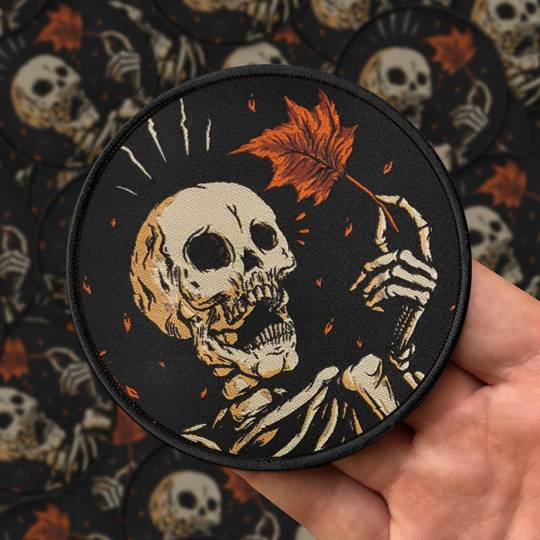

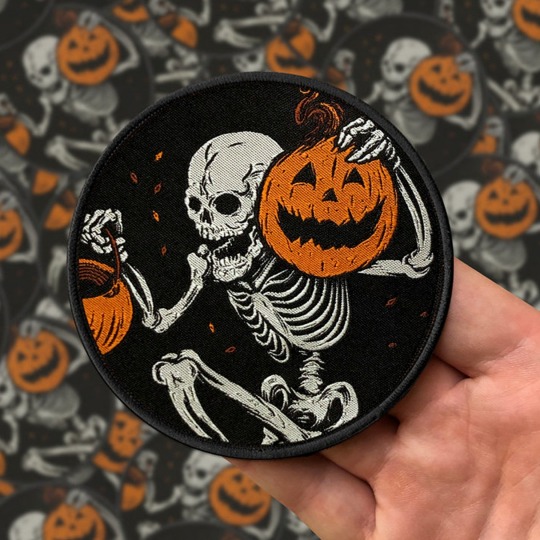
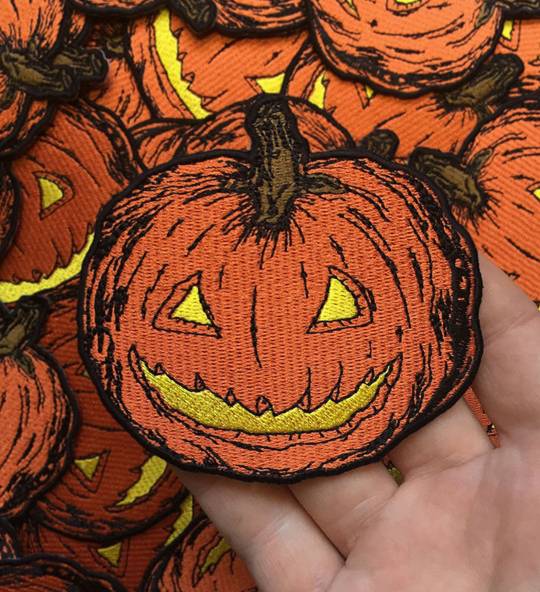






Iron-On Patches
Seventh Ink on Etsy
#moth one is top tier#leaf is low with skeleton leaf just above it#Halloween 4 life is low and then everything else is top tier#obviously the pumpkin skull is king
33K notes
·
View notes